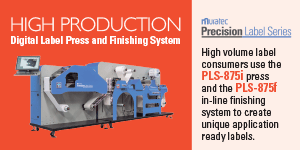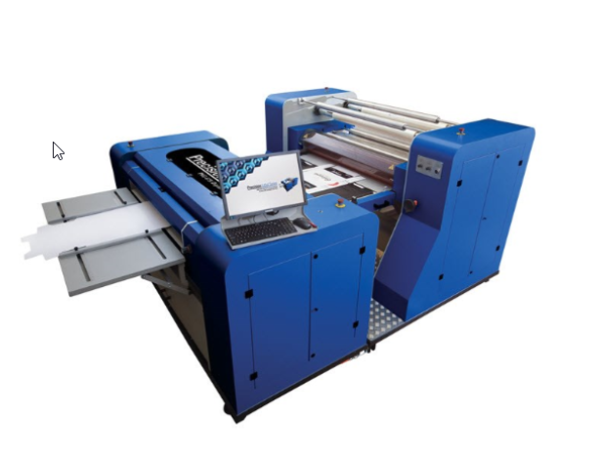In yesterdays post This Week in the Copier Industry 5 years Ago I wrote about the end of the month for me along with still have 25% of the month left. Well, tonight there's still 20% of the month left. I had two appointments, both where buying decisions will be made for August. Thus they count as two added opportunities. The rest of the day was spend with pre-planned stop ins, along with anything else that looked interesting. I had ten on the list, made all then and added two accounts that looked like they could have potential.
I'm amazed that reps are still cold calling willy-nilly. There needs to be a plan and that plan should focus on prospects that could provide decent revenue. Why even bother knocking on a door where there are 5 cars in the parking lot (unless it's an Architect, Engineer or Construction = wide format). Doesn't make much sense, scout the parking lots that are jammed because there's something going on there!
Enjoy these threads from Ten Years ago this week!



















The tales of overselling A3 devices. I blame on manufacturers.
Manufacturers that are willing to subsidize pricing for A3 along with neglecting A4 cost per page. The perfect A4 devices would have the A3 cost per page model with all speed ranges.
No manufacturer has yet to go that route, not even Lexmark. All we see is lame attempts from the manufacturers to please dealers with sprinklings of sub par A4 devices.
Next are the quota’s placed on dealers and direct. Most direct and dealers have some sort of revenue quota on sales peeps. Revenue quotas drive sales peeps to sell on price, which fuels the commodity purchases.
After almost 40 years of selling to SMB accounts both under GP, revenue and gp/revenue comp plans I don’t see a solution.
If I were King, I would develop two types one for A4 and one for A3. All would be color, all would have the same cost per pages model. All would have the same speed for print and scan. I would then offer annual renewable scan and print speed licenses for our different clients.
Ever try training new reps? It’s a fracking disaster, too many models, too may options, too many configurations. Maybe one out of ten hang around for more than 3 years.
Here's @Ray Stasiezcko original blog
It seems when industries are in disruption, its actors waste too much time selling each other on why they're still relevant, instead of selling themselves on a new relevance.
Recently, I attended a gathering of leaders from the Imaging Channel. These events are numerous, and lately, they all seem to have a commonality, I describe as; "The Selling of Yesterday's Merits."
The crowd is gathered to hear about an alternative solution designed to help the dealer diversify. The presenter will spend their first 15 minutes talking about how print will be around forever, or how valuable printers and printed pages are to all business workflow, and more than likely, these presenters will eventually quote some survey which determined that pocket protectors and legal pads are flying off the shelves because millennials like taking notes on paper.
These conversations are intended to make the audience feel good about yesterday but are distracting from real threats and opportunities the Channel has in front of it. Why is the Channel, still allowing itself to hear what makes them feel good overhearing what's needed to make them better? And when will the Channel realize it's not about going paperless? Those conversations are distracting to the real threats.
My friends, the channels threats are not about paperless they're about annuity evaporation destroying the benefits of the current delivery model. The industry must reinvent to monetize and profit off the decline. However, first, stop listing to the nonsensical distractions selling the industry that there's still time.
"People still rent movies they just don't need the stores to get them."
Blockbuster's assumption that people would continue renting movies to watch in their homes was, in fact correct. However, the people didn't need the stores to accomplish that. Blockbuster could not imagine a different delivery system. My friends in the Imaging Channel it's time to imagine what could be based on what should be. Don't waste a valuable lesson from Blockbuster.
So, let's think back to these meetings 20 years ago. I guarantee there was no time being wasted selling each other on the merits of the industry. Those in attendance were excited about the industry's growth and all the possibilities that growth presented. My friends, it is time for the Channel to replace today's emotionally draining nonsensical selling of yesterday relevance. With a new passion and excitement for the threats and opportunities that today's relevancy brings.
"Disruptors get excited when the old way refuses to discuss alternative probabilities."
As the market's end-users continue declining in product needs, the industry must focus on capitalizing on the decline. Here are three areas needing immediate attention.
1) Dealers must have an A4 strategy because innovators will bring one to market. The decline in print volume and the data proving the facts that more than 80% of all A3's are oversold based on the realities of customer needs. This product-centric A3 approach opens the door for a customer-centric innovator to deliver A4. Dealers have to acknowledge the realities that not all print equipment customers are equal. For way too long the industry has sold in the same manner to every customer type regardless of revenue. Even today we see 1990 print management strategies being presented as the future savior. Print management in the majority of the SMB accounts is not a needed customer reality. The reality is this. If the SMB customers' were educated on the channel's over selling of A3 and were provided information on the merits of moving to A4. The customer would get more value then some print management program designed to sell software, leasing, and toner.
2) The industry must have a diversification plan in products and acquisition strategies. Dealers and manufacturers must look to alternative deliverable acquisitions, such as CPA Firms, Business Consulting Firms, or even business insurance providers. Dealers, manufacturers, VC, and private equity firms must question continuing to buy declining revenue without any diversification.
3) The industry must look at new ways to finance end-user hardware. Legacy leasing of equipment will most definitely be disrupted as OEM's, and Mega dealers bring to market self-funded products. Such as HaaS, DaaS, and unique programs in order to circumvent the new coming leasing laws. Many of the larger leasing entities are positioning themselves to participate in this new era of Everything as a Service. Don't find yourself stuck holding a five-year lease agreement when the as a service model invades the print equipment industry.
4) Dealers must look at re-building their own Managed IT Infrastructures and upgrade any decades-old technology. Future products and services will not be delivered through 1980 technologies. Both internal and external customers will demand modernization. The time has come for dealers to stop being victims of the outdated technology monopolies which have held back their innovation. Delivering the future to the present takes the ability to leave the past and embrace technologies built for the future.
So, Beware of the Insecure Collaborators.
Those collaborators who refuse to face market realities because the pain associated is the collapse of their yesterday's relevance. You must avoid collaborators who feel they can only benefit by keeping those they collaborate with in the past. These collaborators for yesterday's relevance gather and fool themselves into believing they still have time. However, The innovative evolutionary clock-never stops for complacency.
"Those who say, "We still have time" usually prove they can't tell time"
Today the Imaging Channel's collaborators must look through and past themselves when looking towards the future. It's the visions from open minds where the new threats and the opportunities from those threats are discovered. If the industry's collaborators continue only looking behind themselves, or to those alongside them, they will miss out on what's ahead, and run into defeat. Nearly all disruptions which destroy the old model were brought to market by new players while the former players continued collaborating and competing as they always did.
In Closing:
The Imaging Channel must welcome that which makes them uncomfortable, must imagine new ways to deliver relevancy instead of fighting to keep the old ways relevant. Nothing will come new by saving that which is old, and if the old guard doesn't want to go to the future, then the industry's new leaders, must leave the old guard in the past.
"A company becomes obsolete when they focus on delivering the past to the future instead of delivering the future to the present"
Send invite if you wish to connect here on Linkedin
Ray Stasieczko